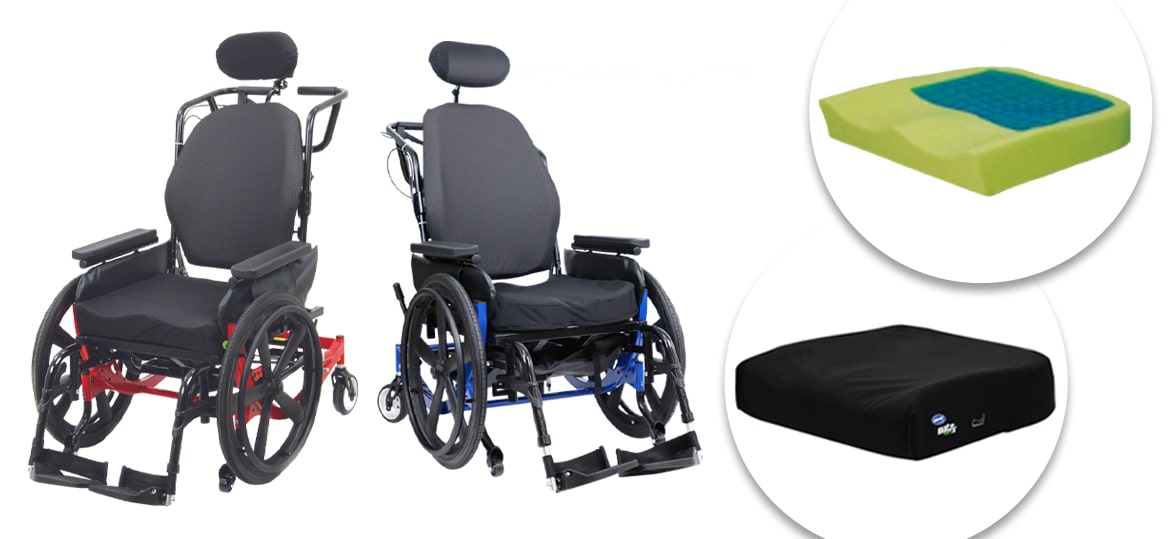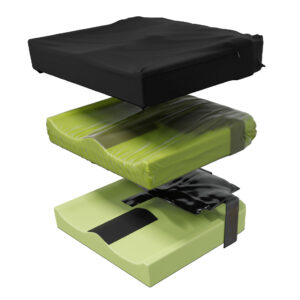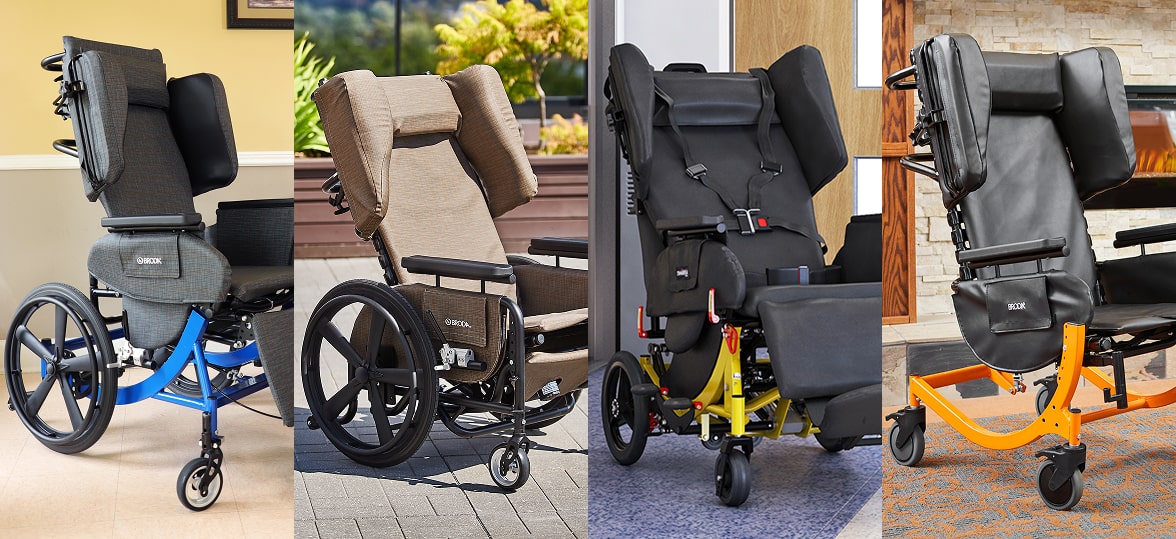Comfort isn’t one size fits all, and neither are wheelchair cushions. Physical condition, additional symptoms, and seating preference can all inform which accessories keep you safe and comfortable in your wheelchair.
Thankfully, there are many wheelchair cushion types on the market.
In this guide, we present the different types of wheelchair cushions, why choosing the right cushion matters, and how to care for your cushion once you have selected the best one for your needs.
Types of Wheelchair Cushions
The types of cushions for wheelchairs available in today’s market vary widely in materials, sizes, and specifications. Most fall into one of four categories.
Foam Wheelchair Cushions
Basic foam padding is common for a wide variety of chairs, from bus seats to office setups. It is popular because it is affordable. While these types of basic cushions can be used for wheelchairs, most foam used in wheelchair cushions is of a higher quality.
Even so, foam is still generally the most affordable material for wheelchair cushions. It offers a comfortable and sturdy base. However, the material will likely lose shape and shift pressure support over time. Foam cushions typically need to be replaced more often than other types of cushions for wheelchairs for users to maintain their comfort levels.
Air Wheelchair Cushions
Air-filled wheelchair cushions are a popular method, especially for those at a high risk for bed sores. A thin, but durable, base is supported by air to create a more comfortable sitting position.
Filled cushions offer more customization in pressure and adjustments, making them ideal for users with fluctuating needs. They also offer excellent weight distribution for even relief and wear.
However, their unique design also makes them uniquely prone to damage. Air cushions are more vulnerable to punctures and leaks, and may be less stable for someone who shifts their weight or moves around a lot.
When using an air cushion, be aware that regular maintenance is required. Inflation levels should be checked daily, otherwise the cushion may cause some of the issues it’s designed to treat. Always follow the manufacturer’s instructions when inflating the air cushion to make sure it provides the proper level of immersion, envelopment, and support.
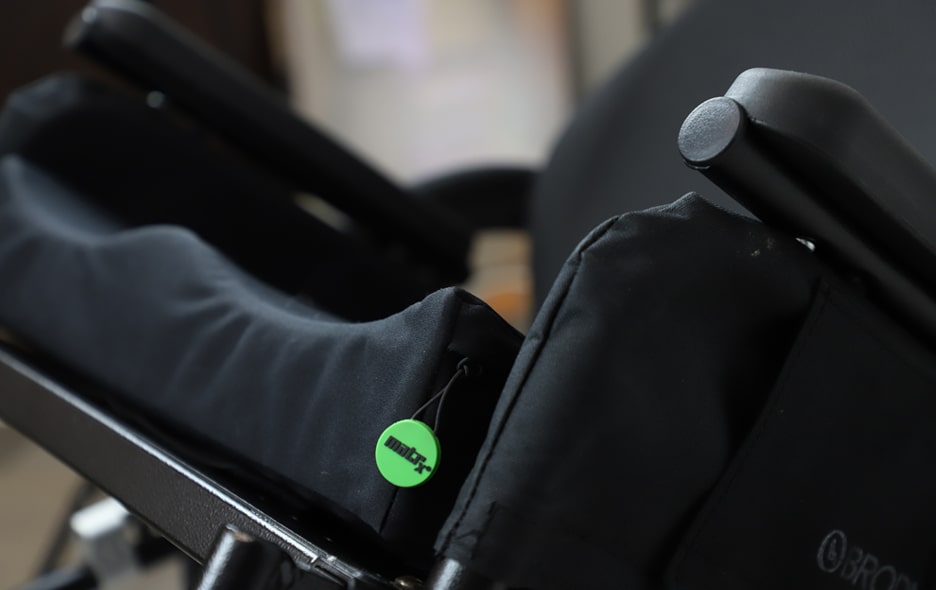
Gel Wheelchair Cushions
Silicone- or polymer-based gels balance the features of foam and air-filled cushions. They typically offer a sturdy base topped with gel pouches for ideal pressure distribution. Gel also processes temperature better than other materials, allowing it to reduce heat, sweat, and friction.
Though exact details will vary, gel is often one of the most expensive types of cushion. The upfront cost is mitigated for most by the material’s durability and long use span mitigates the upfront cost for most. Gel is also the heaviest material used in most cushions, which is a consideration for users who need wheelchair equipment to adhere to certain weight requirements for maximum mobility.
Combination Wheelchair Cushions
Combination wheelchair cushions made from both high-resiliency (HR) foam and gel are designed to offer the “best of both worlds” in comfort and pressure management. The foam layer provides structure, stability, and positioning support, helping users feel grounded and secure in the chair, while the gel component helps distribute weight more evenly and reduce peak pressure points that can contribute to skin breakdown.
Many gel-foam cushions also help absorb movement and micro-shifts throughout the day, which can enhance comfort for users who sit for long periods. These cushions are especially useful for individuals who need more pressure relief than standard foam alone can provide, but still want a cushion that feels supportive, not overly fluid or unstable.
Broda Seating Cushion Packages
Broda cushion packages are designed to enhance comfort while maintaining proper support and positioning. Made with foam bases, each cushion package utilizes different material layers to achieve maximum comfort.
PS
The PS cushion from the Motion Concepts Matrx® Seating Series is built from lightweight foam with covers and liners for ease of maintenance. Like other foam cushion options, it is one of the most accessible, versatile options available.
Vi
The Vi cushion from the Motion Concepts Matrx® Seating Series uses three foam layers for increased stability and comfort, with additional covers and liners for easy maintenance. It is ideal for those who need sturdy, all-day positioning and extra skin protection.
PSP
The PSP (Posture Seat Polymer) cushion from the Motion Concepts Matrx® Seating Series includes molded-in polymer gel in its layers. This provides increased pressure distribution, offering skin protection and shear reduction. Like other gel combination cushions, this package is ideal for those who want to balance the benefits of sturdiness and diffused pressure.
Libra
The Libra™ cushion from the Motion Concepts Matrx® Seating Series is built with fluid layers, which allow it to be adjusted for specific needs. The gentle fluid cushioning protects all parts of the body from pressure injuries, including skin and bony prominences.
Like other combination cushions, this package is ideal for those with fluctuating or unique positioning needs, like those common in progressive conditions. It is recommended for those at highest risk of skin breakdown.
Why the Right Cushion Matters
Those with mobility limitations or chronic health conditions know: The right healthcare tools are elemental to their ongoing well-being. Choosing the right wheelchair is vital, but so are additions like cushions.
When used correctly, cushions ensure proper seating and support in a wheelchair. Users can maintain their posture and, when applicable, upper body mobility. Cushions also mitigate secondary symptoms like fatigue, aches, and skin breakdown.
Ultimately, the right wheelchair seat cushion type offers superior comfort, symptom management, and quality of life by providing relief and greater ease in daily routines.
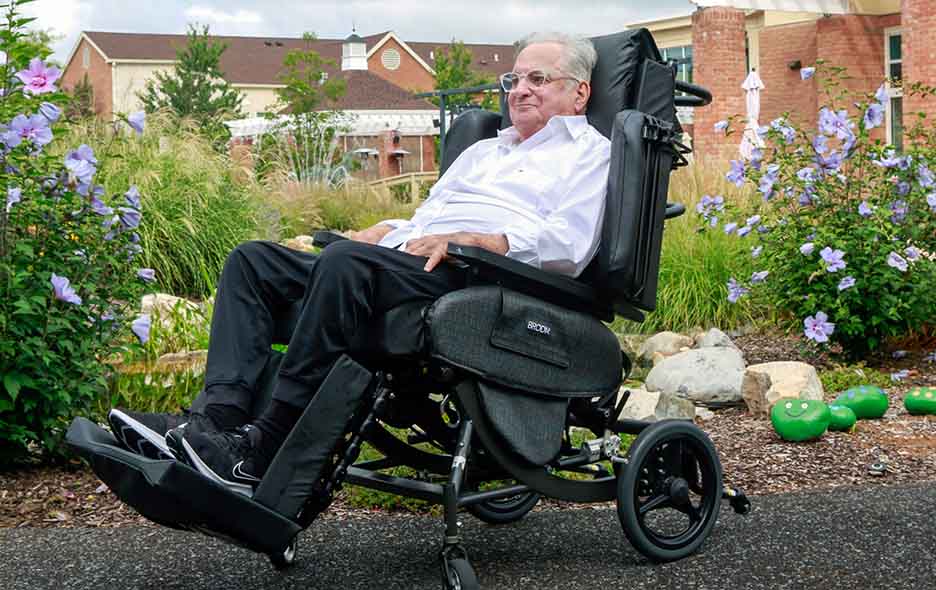
How to Choose the Best Wheelchair Cushion for Your Needs
Extra cushioning isn’t the only way to get superior comfort and pressure redistribution. Broda wheelchairs are designed with a proprietary Comfort Tension Seating® system that cradles the body and provides pressure relief without bulky and expensive cushions. This support is sufficient for many users.
If greater support is required for optimal use and comfort, the type of cushion you need depends both on your preferences and your wheelchair type. Always consult with your care team—including an occupational therapist or seating specialist—to balance your needs. Together, you can make decisions with these factors in mind.
Wheelchair Compatibility
Accessories should complement wheelchair usage. For cushions, this means that wheelchair size and height need to be taken into account. Cushions can transform seat height significantly, and most wheelchair heights are already set. With the right cushion, feet should still sit comfortably on the foot rests or on the floor for those who wish to self-propel with the feet.
Comfort Management
One of the primary purposes of wheelchair cushions is pressure relief. While many cushions may feel comfortable on first use, after time, they can eventually “bottom out” or add pressure that isn’t noticeable at first. Always invest in a quality cushion that’s specifically chosen for your condition, size, and lifestyle. A high-quality cushion will last many years with proper maintenance, providing extended value and comfort.
Cushioning can also affect overall support, stability, and wheelchair weight, which are also part of comfort. A cushion doesn’t necessarily add to overall comfort if the weight can make it much more difficult to navigate in the chair. Be mindful as you test cushions and watch symptoms over time. Choose cushion options that support overall comfort levels.
Care and Maintenance
All cushions will wear over time, but those that can withstand daily conditions will provide better comfort and support. Consider the durability and use span of cushion materials to make your choice. Also, think about how much time, effort, and supplies will be necessary for maintenance, cleaning and care. Air cushions need daily checks for proper inflation and a trained technician to inflate properly. Gel cushions must be kneaded on a regular basis to keep up the ideal texture. A cushion that is easier to care for makes overall condition management easier.
Cleaning
A wheelchair cushion should be easy to wipe clean in the event of a spill or incontinence. Many cushions come with a fluid-resistant cover that won’t allow moisture to seep into the body of the cushion. Many wheelchair users and caregivers find it a worthwhile investment to purchase backup cushion cover as well.

Tips for Long-Term Cushion Comfort and Care
The better maintained your cushion is, the longer it will last. Manufacturer instructions will give you the best guidelines for cushion care. In general, these basic tips will keep cushions in the best condition possible.
Like all seats, you should use cushions mindfully:
- Place them in the proper position and orientation
- Check the cushion before each use for even distribution or any imperfections
- Rotate or swap out cushions for even wear, if applicable to the model
Make cushion cleaning a part of your regular wheelchair maintenance. Wipe down with mild solutions that are compatible with cushion materials. A damp cloth and gentle soap work for most materials, while using stronger disinfectants depends more heavily on manufacturing details.
When a cushion has worn out or an individual’s needs change, replace cushions for optimal comfort.
Explore Your Cushion Options with Broda
Ideal wheelchair comfort is unique to each individual user. The right cushion can enhance comfort, maintain function, and aid in long-term quality of life. With information about your wheelchair options, you and your care team can choose accessories that match your needs.
Resources are available to help you navigate your options. Learn more about some of the conditions that our wheelchairs support.
